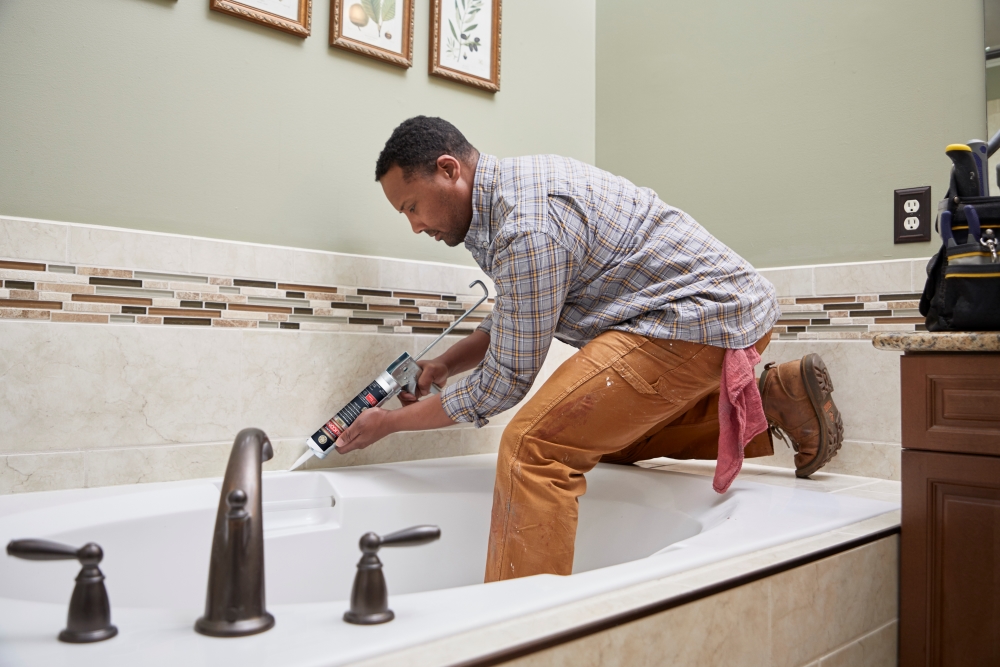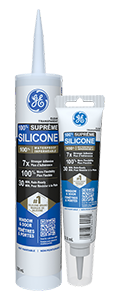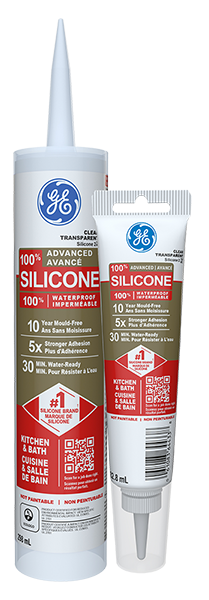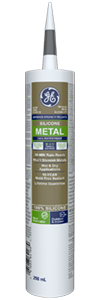Note: This article is provided as a general guide only and is not intended to replace product-specific installation procedures; always follow applicable manufacturer’s instructions. Depending on your home’s age and condition, location within the home, and other potential factors, repairs, upgrades, or other services may be necessary before the beginning or completion of your project that may involve the services of a home improvement professional. This article does not include advice about local building codes or related inspections.
Any time you walk through the home repair section of your favourite store, you will see silicone sealant sitting on the shelf. What uses does it have to earn this spot of honour? Let’s dive into what all-purpose silicone sealant is and how it compares to your other options so you can decide if it’s the best tool for your job. In addition, get ready to explore five ways you can use all-purpose silicone around your home.
What makes all-purpose silicone sealant unique?
Most sealants qualify as either caulk or silicone sealants. Caulk has an acrylic base, which gives it a firm seal. It works well for high-traffic areas. However, because caulk dries so rigid, it is more prone to cracking over time.
Silicone sealant is a slightly softer sealant. The softness is the sealant’s strength as it gives it greater flexibility. As surfaces move or change with the weather, the silicone sealant moves with the surfaces, ensuring a secure seal.
Silicone sealant is also the best option for high-moisture areas. That’s why it’s very popular when sealing windows and doors where they will be in contact with rain and other elements. It also works well in kitchens and bathrooms and handles a significant amount of water.
Silicone sealant is a flexible sealant that can withstand extreme temperatures and environments without cracking.
How is all-purpose silicone sealant different from other silicone sealants?
When you search for silicone sealant, you will see dozens of options. It can feel overwhelming, and sometimes, you might think the best option is to use an all-purpose sealant. An all-purpose sealant, after all, is supposed to work for any job.
What makes all-purpose sealant unique is that it’s flexible and versatile. It’s strong enough to stay in place for years but gentle enough not to mess up various finishes.
If you’re in doubt, opting for an all-purpose sealant is always a reliable fallback. However, before you do, ask yourself these questions:
- Are you applying the sealant outside? While all-purpose sealant can work outside, you may want to consider an outdoor sealant like Supreme Silicone Window & Door Sealant. The outdoor sealant has extra protection against the elements and the sun’s UV rays.
- Are you applying the sealant in a high-moisture area? Silicone sealant is 100% waterproof. Purchasing a silicone sealant for kitchens and bathrooms can give you the extra strength needed to fight the mould and stay strong, even with increased moisture exposure.
- Are you sealing a special surface? All-purpose silicone, while very versatile, doesn’t adhere to all surfaces. Always test a small area before fully sealing it to ensure it is compatible with your project. If you are working with a specialty material, like metal, find a sealant formulated for that surface for the best adhesion.
Before using an all-purpose sealant, check your store for sealants explicitly designed for your job. While bathroom and door sealants are standard options, you may be surprised at some less common options that are still available. For example, marine sealants are formulated for sealing boats.
For general household tasks, an all-purpose silicone sealant is the tool that will get the job done right.
5 ways to use all-purpose silicone sealant around your house
Silicone sealant has a wide variety of uses, making it a staple in any home.
-
Sealing gaps in your home
Cracks and gaps can hurt your home’s energy effectiveness as cool air seeps in and warm air sneaks out. In addition to weather, gaps can also allow pests to enter your home.
A solid all-purpose sealant helps plug in those holes. The flexibility allows the wall around to shift and move with the extreme Canadian temperatures without causing the sealant to crack.
-
Preserving bathroom appliances
Protect your bathroom appliances from moisture, bacteria, and mould by sealing all gaps with silicone sealant. The waterproof formula of the sealant will fight off the moisture without taking a hit in its security. In addition, its flexibility allows room for movement, especially around the toilet and pipes. Seal around your tub, sinks, toilets, and anywhere pipes go into the wall for the most thorough seal.

Sealing a bathroom -
Protecting kitchen appliances
The kitchen is another hot spot for moisture, which can lead to bacteria and mould. Silicone sealant’s mould-resistant formula helps prevent that growth. Its strong, flexible seal also holds up to the continued wear and tear of kitchen use thanks to its flexibility and waterproof formula.
Seal your kitchen counters where they meet the wall and backsplashes that prevent water from contacting the wall. Be sure to thoroughly seal around your sink as it’s the area of your kitchen most prone to mould growth.

Sealing a kitchen -
Strengthening outdoor spaces
Silicone sealant is a reliable outdoor sealant as well as an indoor staple. Its flexibility and waterproof formula can help protect concrete cracks, chips in tiles, and holes in the wall. It will fill in those spaces, giving those items new life and strength. You can also use it to seal your exterior foundation, doors, and windows to keep out pests and weather.
-
Completing DIY projects
All-purpose sealants aren’t limited to home repairs. Sealants are very flexible, which also makes them ideal for crafting.
Silicone might be your best option if you need a strong, flexible seal. You can use it for anything from weather-proofing outdoor décor you create to protecting bathroom furniture you DIY’d. All-purpose clear silicone can adhere to most surfaces without taking away from the look while coloured silicone can match the surface you are sealing.
Here are a few of the top DIY projects that silicone can help create:
- Art: Silicone can protect art and décor from the elements. You can also use the silicone to make crafts by drying its strong beads in decorative patterns.
- Costumes: Silicone sealant can help designers create jewelry and costume pieces. Because of its flexibility and strength, you can dry it in any shape, and it will hold up.
- Crafts: While silicone sealant isn’t a glue, some crafters use it as a waterproof glue substitute. Silicone can help connect pieces on a bathmat and other water-exposed areas.
- Home items: Silicone sealant can help fix or create household items. It can repair furniture or help you design furniture with a strong bond.
Keep your home sealed tight with all-purpose silicone sealant. You’ll preserve your home and appliances longer while creating a visually appealing aesthetic.
Find an all-purpose silicone sealant in a store near you.



